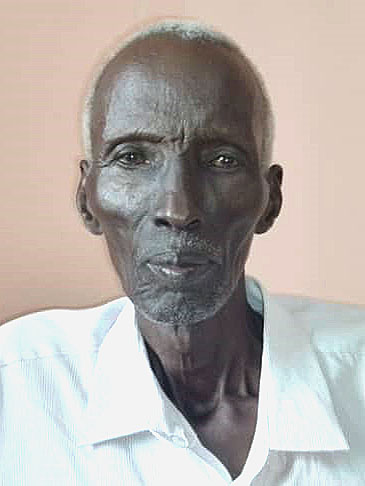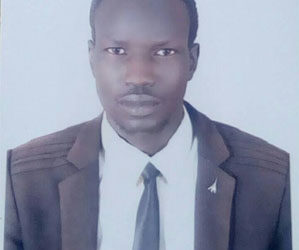By Joseph Ring Lang
Before approaching the subject of transition, let’s assess the state of our affairs so as to guide us to the correct answer.
- The Liberation Era 1983 – 2005
- Outside Combat
The Liberation era was characterized by the use of food as a weapon of war by Sudan Government rulers to defeat the rebellion which was based in Southern Sudan of Sudan – even if it means making the local population extinct from the Planet Earth. The Khartoum successive rulers at that time refused to come to terms with the fact that they did not take by force the Government of Sudan from the Anglo Egyptian rulers. They had left peacefully on 01/01/1956, leaving behind (9) nine Provinces of Sudan of which (3) three provinces were in the South after they governed the Country from 1898 to the end of December 1955.
The other twin problem was the fact that the Sudan People’s Liberation Movement and Army (SPLM/A sprang up from a rural based economy. Southern Sudan economy was at subsistence level and couldn’t sustain a large army – unless there was a leeway for the market economy to function. The knowhow to introduce large scale production at the time of war was impossible, to say the least.
Interrelated Comparison
It is only the Nuba of the SPLM/A that managed to some extent to go around that obstacle when opportunity arose in 2002 at the time when their area became accessible to UN Agencies and International NGOs. Their Relief Wing of the Movement asked for tractors from International NGOs because they were not sure that the cessation of hostilities could last for a long time on the side of the Government of Sudan.
Eventually, one of the International NGOs brought to them some tractors. In one rainy season, they were able to stockpile 1,000,000. (One million) bags of 90 kilograms’ sorghum.
Missed Opportunity
Returning to earlier narrative of the war path followed by the Sudan Government based in Khartoum, they could have negotiated with the aggrieved national ethnic groups their problems peacefully. But it became apparent that they did choose the war path of suppression, instead of peaceful settlement.
The outcome of that line of belligerent behavior was the 17 years’ war between the 6 provinces of Northern Sudan who were ruling Sudan versus 3 provinces of Southern Sudan who were distressed and exhibited their anger during Torit mutiny in October 1955 (when the English were handing over military garrisons to the Northern Sudanese officers). It became a flash point of the First Civil War that ended in 1972 under an Agreement called Addis Ababa Agreement between the Government of Sudan under Jaafar Nimeiri and the Anyanya Liberation Movement under Joseph Lago with a Semi-Autonomous Government known as the High Executive Council.
Agreement Falling Apart
But the negotiated agreement lasted only 11 years from 1972 to 1983. The rulers in the Capital Khartoum decided to win an outright military victory which had not succeeded earlier. The new Government strategy became devastating on human life when half a million (500,000.) people died in their houses and along the railway line looking for food in one season in 1988. After the war ended in 2005, the total assessments of war victims in Southern Sudan were estimated at (3,000,000.) three million deaths.
International Community Intervention
With increase death toll from man-made disasters, that is when the international community headed by the Government of the United States of America (USA) intervened and established Operation Lifeline Sudan (Abbreviated OLS) to save civilian caught in the conflict of what is now known as South Sudan.
Subsequently, the International Community forced the two warring sides to agree on a peaceful settlement in 2005, under the agreement known as CPA (Comprehensive Peace Agreement). The OLS operation activities stopped after the Comprehensive Peace Agreement (CPA) was signed in 2005.
The CPA Era 2005 – 2011
The CPA Era was nonetheless characterized by a changeover of former Rebel leaders to become automatically statesmen of the new Semi-Autonomous Government that was named GOSS (Government of Southern Sudan) within the Government of Sudan. Using audio visual observation, it was a period of adjustment: from giving orders to shoot an enemy; to giving novel type of orders to run a civilian government. Not only that, the civil administration needs above all, economic prosperity not only to improve the lives from decades of economic stagnation caused by the 21 years’ civil war but also to survive as a government.
To persist as a government, a strategy of winning the hearts the people which is called good statesmanship has to come into play so that economic prosperity moves on – otherwise things can easily fall apart through the collapse of the economy.
Disarray
Also looking at it on reflection, the period of the CPA epoch was also characterized by a development in which the former rebel leaders began to show their hidden quality of disarray which was concealed within the Sudan Peoples’ Liberation Movement and Army. They thought, the Liberation Movement had achieved its end objective – that is the dislodge of the ethnic Arabs from administering South Sudan.
It never occurred to them that the end of the war was the beginning of a long march towards the untrodden path of making their Country (called South Sudan) great like other great countries on the Planet Earth.
Business as Usual
After having spent 21 years fighting, it was high time for them to follow a new path of doing things – even if it means looking for the knowhow from different countries that are willing to help in those rocky times of new changes, if they were very sure that there are no qualified locals to do the jobs. In the end, it became business as usual – which was the carryover of the old style of the bush, management smartness that made them to survive in the wildernesses for 21 years.
Using also audio-visual observations
Looking at it now retrospectively, one can only guess that the top leader of South Sudan had two options in his mind, at that time. Let me highlight here so as to leave room for other views, I do stand to be corrected if a better explanation is given to disprove my reasoning.
One option was to stop everybody from taking anything, except what is stated by the Financial Laws and Regulations. In doing so, after spending 21 years in the bush with his generals, there was a very high possibility that those former top army officers who became statesmen from different ethnic groups could turn around and put into the dustbins all the gains that had been reached that far. They could have easily worked against the Self-determination vote signed at Machakos on 20/07/ 2002 which was embodied in the CPA Naivasha final Peace Agreement that was signed on 09/01/2005.
The other Option was to allow them to do what they want. It turned out that is what he had chosen. After the end of the 6 years interim period of the CPA (2005 – 20011), the laissez-faire style in trade was allowed in management of the Government affairs. It had then become a culture ingrained in the minds for more than half a decade (which was the CPA period). It subsequently became a devouring machine that blemished everybody that had dared to slip in to be part of the system.
The Way Forward
To make a roundabout turn, it needs all the former rebel fighters and non-rebel fighters in the Government of South Sudan to sit and reexamine what went wrong like what the Kenyans did after gaining their Independence on 12/12/1963. They sat and reexamined post-independence period. In doing so, they found out that the standard of living of their population was dropping rapidly which was opposite to what was happening to them inside the system. They then pointed out the factors that were responsible for the economic downslide. Afterwards, they then designed new policies to make the economy grow which eventually became prosperity of everybody in the country called Kenya.
Eyewitness
I did witness their prosperity in 1979 during the HEC (High Executive Council) period. We, from some Departments: Cooperatives; Agriculture; including the Fisheries whose activities were based at Lake Turkana and the Coast went there on a study tour, funded by the ILO (International Labor Organization
My surprise started after landing at Jomo Kenyata Airport. I thought I had landed in a European town. Everything was glittering: the airport; the Hotels; the streets and the buildings. Later at the farms, I saw also everything moving upwards.
At the farms we saw Friesian Cows producing a lot of milk. Our nearest to it was the Friesian Bulls that were imported to Marialbai Cattle Range near Wau which the Department of Animal Resources of the HEC (High Executive Council in Juba) had introduced so as cross breed with the local heifer cows – but was still a long way off before becoming part of South Sudan milk production. At the farms also we saw International NGOs from Europe busy in helping the locals to improve their farms’ production.
As for the Cooperatives what was new to us was Cooperatives Milk Marketing which we could only introduce at a later date. As for the Coffee and Tea Production we saw, there was nothing new for us to learn there. We had Yei, Coffee Cooperatives Marketing and Hagar Company tea production in Yei.
Coming to Fisheries, there was no learning lesson to bring back home because Lake Turkana was shrinking at that time. But we took comfort in the fact that we were more advanced than them because our salted, dry fish from Upper Nile was not only continuous finding markets in Khartoum but was also exported to Zaire which is now Congo. AS for the Coast at the Indian Ocean there was nothing we learned there because Southern Sudan of Sudan was landlocked area and the mechanism of fishing used there was not applicable to our economic environment.
In the light of that.
I only saw our real Africa, after we took a flight using a small plane to Lake Turkana and then moved by car to the provincial town called Lodwar – it was not an issue by then but just an observation. Strikingly, in 1998 when I revisited Kenya another time, I didn’t see that prosperity again.
It had dropped back to our real Africa – in all probabilities, there must have been some retrogressive policies that brought that negative turn of events.
Returning to our CPA era
On the side of the local population of South Sudan, it was a period of enthusiastic expectations. The question in the minds of all the South Sudanese: would Sudan Government allow Southern Sudan to vote on Self-determination Vote or not? Or would Omar Hassan AL Bashir, the President of Sudan respect, the CPA Self-determination Vote by not falling into the footsteps of Numeri when he abrogated the Addis Ababa Agreement of the HEC (High Executive Council) case in 1983?
In the end Omar Hassan AL Bashir kept his honor and allowed Southern Sudan to vote on Self-determination. It resulted into cessation of South Sudan to become an independent Country.
Two years of post-Independence 2011 – 2013
After becoming an independent country that was named South Sudan which was a derivative from the word Sudan – which the ethnic Arabs used to call “Billad el Suud” which means country of the blacks; it was a period of psychological change for the population to feel the difference of being an independent Country. But the euphoria, didn’t last long. Some of the former top rebels’ leaders felt that they could lead South Sudan outside the ballot box.
Tension then, between top rulers and their top leader that was ruling the Country began to rise up by the day. Some members of the top former rebel leaders felt that they were leaders in the waiting. The outcome of that mindset resulted into war which had many names but is not part of the current presentation.
What is important here is that after failing to take over the Government through the barrel of the gun the only option left to them was to go to the bush, since they were not willing to surrender. From there they could stage a comeback. They did try that but was unsuccessful.
2013 – 2016 War – within the newly Independent Country called South Sudan
The newly enthusiastic and ambitious group aiming to reach the top position in the Country called South Sudan through the barrel of a gun, after failing to capture the Capital Juba went and captured the capitals of 3 states Bor of Jonglei, Malakal of Upper Nile and Bentiu of Unity State. They remained there until they were dislodged from those places by the government forces.
After that, the International Community intervened and forced an agreement on the two sides called Agreement on the Resolution of the Conflict in South Sudan (ARCSS) but, the agreement was short lived.
The forced Agreement disappeared after a fierce fighting broke out between the rebel fighters and the government forces – in what was described by others as J1 dogfight. The leader of the rebel army returned to the bush again after that unsuccessful battle. They stayed in the bush fighting government forces for two (2) years.
The Revitalized Peace Agreement 2018 – 2022
A new peace attempt was made by IGAD (Intergovernmental Agency for Development) headed by Omar Hassan al Bashir, the President of Sudan. After conclusion of the peace talks which became known as the energized Peace Agreement of 2018.Those talks were held in Khartoum, the Capital of Sudan.
It is worth mentioning here that Omar did not encounter a lot of difficulties in his arbitration because most of the rebel leaders were residing in Khartoum when peace talks started.
Although the peace agreement is now somehow shaky, yet it is still holding up to now.
Extended Revitalized Agreement from 2022/ 2023 to 2024
The signatories of the Revitalized Peace Agreement made extra mile by agreeing among themselves to extend the interim period from 2022 to 2024 without the involvement of the IGAD (Inter-Governmental Agency for Development). It now remains solely on their hands to hold elections on schedule and there will be no IGAD involvement.
Nearing to Conclusion
Starting from The Liberation Era from 1983 to 2005; moving through Comprehensive Peace Agreement from 2005 to 2011 which eventually lead to Independence in 2011; up to relapsing into two intervals of war mentioned above for leadership fight and then up to the last agreement known as Revitalized Peace Agreement of 2018, which was extended up to 2024, by an agreement between the groups –where do we go from here?
In my personal deliberations, there are many possibilities that the signatories of the Revitalized Peace Agreement may choose. In that line of thinking, I do imagine that they may decide on one of the following scenarios from one (1) to four (4):
Excellent Scenario – 1
They could decide to implement the Political Parties Act 2012 which was passed by Parliament and signed by the President in the same year. The Act, if implemented could pave the way not only for smooth elections but also for establishing a precedent, for sorting out differences within the political parties through internal scrutiny who is the best person to lead the Party in the current environment of turbulent times.
In that respect as stipulated by 2012 Act, each Political Parties will elect its ‘Governing Body’ at the State level. Those elected at the State to be their ‘Governing Body’ will subsequently move to the Capital of the Country to form the ‘National Governing Body’ – after satisfying the condition stipulated in the Act that each political party should have a ‘Governing Body’, at least in eight (8) of the of the ten (10) States of South Sudan in order to be considered as a national political party.
After formation of the the ‘National Governing Body’ in Juba, each Political Party will then be in a position to elect their torch bearer that will compete for the seat of the President of the Country during the elections according to the Constitution of each political party which should be in alliance with the National Constitution of South Sudan.
Somehow Good Scenario – 2
They could decide to hold elections on the testimonial certificates which were temporary given by the Registrar of the Political Parties in Juba. Whatever problems that will emerge, they will have to sort it out by themselves – since the Registrar will have no Reference Law to apply to solve their differences that could emerge.
Bad Scenario – 3
They could decide to extend the elections period as they had done before.
Worst Scenario – 4
They could decide to do what they know best which is going back to war. I hope they don’t relapse to that out-of-date line of thinking.
In conclusion
There is likelihood that the signatories of the Revitalized Peace Agreement could choose one of those four (4) above mentioned scenarios. Let us wait and see what will happen.
Joseph Ring Lang; Emails: josephlang2020@gmail.com/ langjr2002@yahoo.com




